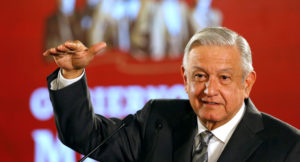
Mexico’s president Andrés Manuel López Obrador (AMLO), a left-of-center populist in office for only six months, finds himself under enormous pressure from the United States—and he is yielding. U.S. President Donald Trump has demanded that AMLO’s government do more to . . .
Read more ›
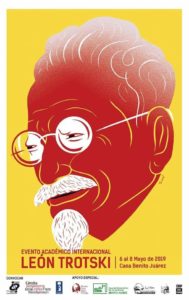
Trotsky Conference in Cuba Poster
Last week I was in Cuba to attend an academic conference on Trotsky. The night before the conference began I had arrived very late at the government-regulated air B&B where I was staying. First there had . . .
Read more ›
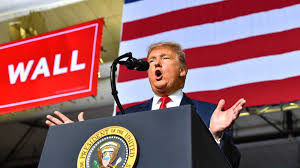
Socialists must organize a national movement against Trump’s national . . .
Read more ›
The Experience of Almost a Century

What can socialists today learn from the experience of the left in the past as it grappled with the issue of electoral politics? Over the last 50 years, American leftists have in general adopted two alternative strategies for dealing with . . .
Read more ›
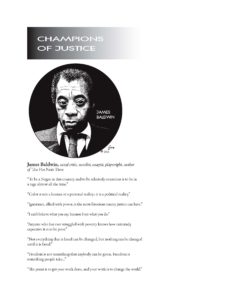
One need not be a Christian or religious at all to feel that the human race, if it does not change its behavior, seems to be heading toward an apocalypse, toward the destruction of the planet and human life.

It has been two years since the explosive surge of the Democratic Socialists of America, now the largest socialist organization in the United States and the largest since the 1940s. And DSA has had some remarkable successes. Today as the country turns its attention to the presidential election of 2020, we ask: How DSA is doing? What is it accomplishing? And where is it going? What do the various caucuses and political tendencies within DSA propose as a future direction for the group? Is there a genuine left wing of DSA, and if not, what is the alternative?
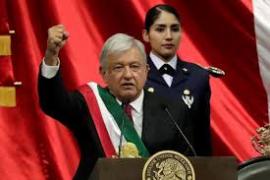
Andrés Manuel López Obrador took the presidential oath on December 1 and then gave an hour and a half oration to the legislators as well as another lengthy speech to the people of Mexico City gathered in the zócalo, in which he reiterated his campaign promises to end corruption, to bring about economic prosperity, and to lead Mexico into a new historic fourth period of Mexican history, a period of "rebirth." The speech made clear that AMLO, as he is called by his initials in the press, is a reformer, but not a radical and certainly not a revolutionary as his opponents have claimed. His call for an end to neoliberalism and to corruption are accompanied by invitations to Mexican and foreign capitalists to invest and make a profit.

[Nov. 23] – Thousands of Elves seized the Winter Palace and overthrew Santa Claus late last night, ending the Claus family dynasty whch has ruled the North Pole for hundreds of years. “We took advantage of the Thanksgiving reverie at the palace—everyone was drunk—and took control with almost no violence,” said one Elf who preferred not to use his name.
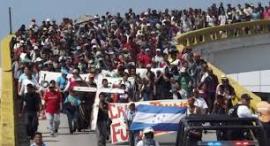
Central American migrants, both desperate and courageous, have thrust themselves into the center of Mexican and U.S. politics with their demand for refuge and asylum. As the head of the NGO Pueblos Sin Fronteras told a reporter, “This isn’t just a caravan, it’s an exodus created by hunger and death.”
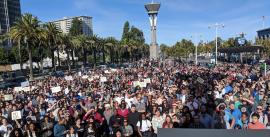
Thousands of Google employees throughout the United States and around the world walked off their jobs yesterday, Nov. 1, “to protest sexual harassment, misconduct, lack of transparency, and a workplace that doesn’t work for everyone.” Beginning in Singapore and working its way around the globe the movement closed Google offices from Mountain View, California, in Boulder and New York, as well as in London, Dublin, Zurich, Berlin and Hyderabad.
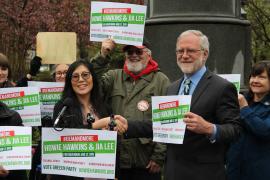
I write this largely for my comrades in the Democratic Socialists of America but also for all who are interested in building a more democratic, egalitarian, and just society. I argue here for voting for Howie Hawkins for governor, the only progressive candidate for that office on the ballot in New York State, and the only open socialist.
I am convinced that any future mass working class or socialist party in the United States will arise largely out of developments in the Democratic Party.
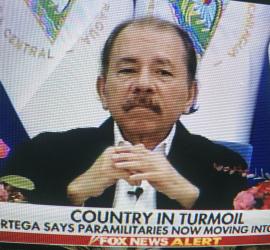
What is the state of the popular rebellion in Nicaragua? What brought about the rebellion? Who is involved in the rebellion? Who are the most important national and international actors? And what is the nature of the Left’s debate over Nicaragua?
President Daniel Ortega’s government has succeeded—for now—in stopping the Nicaragua’s popular rebellion after four months of the most severe repression, including killings, kidnappings, and torture of the regime’s opponents by both the police and paramilitary forces.
After protests and occupations temporarily shut down ICE offices, Donald Trump suffered a significant political defeat when he was forced to reverse himself on separating immigrant children from their parents after they were arrested at the border. By and large, people were horrified at the separation of kids from their families and at the creation of what were basically prison camps for children. Polls showed that only about a quarter of the U.S. population supported Trump on this child-hostage policy, though about half of Republicans did.
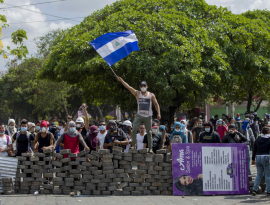
At this moment, the government of President Daniel Ortega and his party, the Sandinista Front for National Liberation (FSLN or Sandinistas), face a popular rebellion from below on a national scale. We look here at the origins of this rebellion, at the alternatives facing it, and at the responsibilities of those of us in the United States toward the people of Nicaragua.
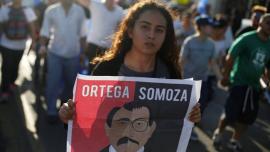 The popular rebellion against the dictatorial government of Daniel Ortega, four-time president of Nicaragua, has been going on now for more than a month. And the Ortega government has continued its violent repression. In the last 47 days, it is reported that 104 people have been killed, while some have been arrested or tortured and others have gone missing. In one of the most atrocious events, government snipers fired on the May 30 “Mothers March” led by mothers mourning the murder of their children. Fifteen marchers were killed and scores wounded.
The popular rebellion against the dictatorial government of Daniel Ortega, four-time president of Nicaragua, has been going on now for more than a month. And the Ortega government has continued its violent repression. In the last 47 days, it is reported that 104 people have been killed, while some have been arrested or tortured and others have gone missing. In one of the most atrocious events, government snipers fired on the May 30 “Mothers March” led by mothers mourning the murder of their children. Fifteen marchers were killed and scores wounded.
What Happened to the Nicaraguan Revolution?
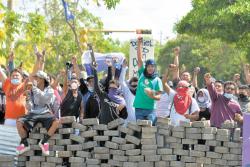
The upheaval in Nicaragua that lasted from April 18 to April 21 and the repression that reportedly left 63 dead, 15 missing and 160 injured by gunfire, have both subsided for the moment. The protests halted after President Daniel Ortega announced the cancellation of his proposed changes in the social security pension law. Photographers were among those beaten. Other human rights centers and the Jesuit University of Central America in Managua as well as Nicaraguan newspaper accounts and discussions with people in Managua confirm many of these deaths and injuries.
Since April 22 Nicaraguans have participated in numerous marches, some raising the call for “Peace and Justice,” and many of the participants carrying placards calling upon President Ortega and his vice-president and wife Rosario Murillo to resign. On April 26 an enormous pilgrimage of tens of thousands called for peace and negotiation organized by the Catholic Church.
Nicaraguan Government Kills 24 – Students, Farmers Call for National Strikes
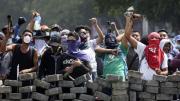
The government of former revolutionary and Nicaraguan president Daniel Ortega has in the last few days killed at least 24 protestors who were demonstrating against sudden and drastic alterations in a new pension law, changes that would have adversely affected the incomes and lives of tens of thousands. Some 200 were arrested and 20 are missing, according to the National Human Rights Commission. Other protestors, many of them university students, were beaten by the police or by goons armed with pipes sent by President Ortega’s party, the Sandinista Front for the Liberation of Nicaragua (FSLN).
We wish our readers a Happy New Year, though we know that you take little joy in it, politically speaking. If we take no joy, we do sometimes find humor in President Donald J. Trump’s proclamations by Twitter, such as his claim that he is a “stable genius.” The current debate revolves around which of those two words is more ridiculous.
A Look Beyond the Immediate Damage
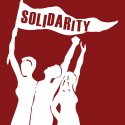
We working people live in darkening times. When the Trump presidency ends in four years—if it does—we may no longer have an organized labor movement. As one of my colleagues, Ed Ott of the Murphy Institute, the City University of New York’s labor school, said to me, “We are at the beginning of the end of the U.S. labor movement based on a partnership with capital.” We are at the twilight of an era. Labor unions and collective bargaining stand to be swept away, and with them the institutions that have sheltered us in the workplace and provided us with a modicum of job security, living wages, health insurance, and pension benefits.

Vivek Chibber’s “Our Road to Power” published recently in Jacobin—oddly enough written as a commemoration of the Russian Revolution of October 1917—codifies a strategy for what is one of the dominant tendencies in the American left today: social democracy. The principal argument of “Our Road to Power” (a title chosen by Jacobin’s editors, perhaps alluding to German Social Democrat Karl Kautsky’s The Road to Power) is that a “ruptural strategy” is off the agenda. By “ruptural strategy” Chibber means one that is predicated upon a crisis of the economic and political system leading to the breakdown or to the overthrow of the state. Chibber believes that since the power of the state is so great today—because of its legitimacy, its coercive power, and its power of surveillance—a revolutionary strategy is ruled out. It would be, he says, “hallucinatory” to think otherwise.
Book Review

Eric Lee. The Experiment: Georgia’s Forgotten Revolution, 1918-1921. London: Zed Books, 2017. 259 pages. Timeline. Notes. Index. (For further information see: http://www.ericlee.info/theexperiment/)
In his new book The Experiment: Georgia’s Forgtten Revolution, 1918-1921 the journalist and historian Eric Lee does two things. First, he tells the little known and complicated story of the Georgian Revolution and the short-lived independent state that it created.













 The popular rebellion against the dictatorial government of Daniel Ortega, four-time president of Nicaragua, has been going on now for more than a month. And the Ortega government has continued its violent repression. In the last 47 days, it is reported that 104 people have been killed, while some have been arrested or tortured and others have gone missing. In one of the most atrocious events, government snipers fired on the May 30 “Mothers March” led by mothers mourning the murder of their children. Fifteen marchers were killed and scores wounded.
The popular rebellion against the dictatorial government of Daniel Ortega, four-time president of Nicaragua, has been going on now for more than a month. And the Ortega government has continued its violent repression. In the last 47 days, it is reported that 104 people have been killed, while some have been arrested or tortured and others have gone missing. In one of the most atrocious events, government snipers fired on the May 30 “Mothers March” led by mothers mourning the murder of their children. Fifteen marchers were killed and scores wounded.




